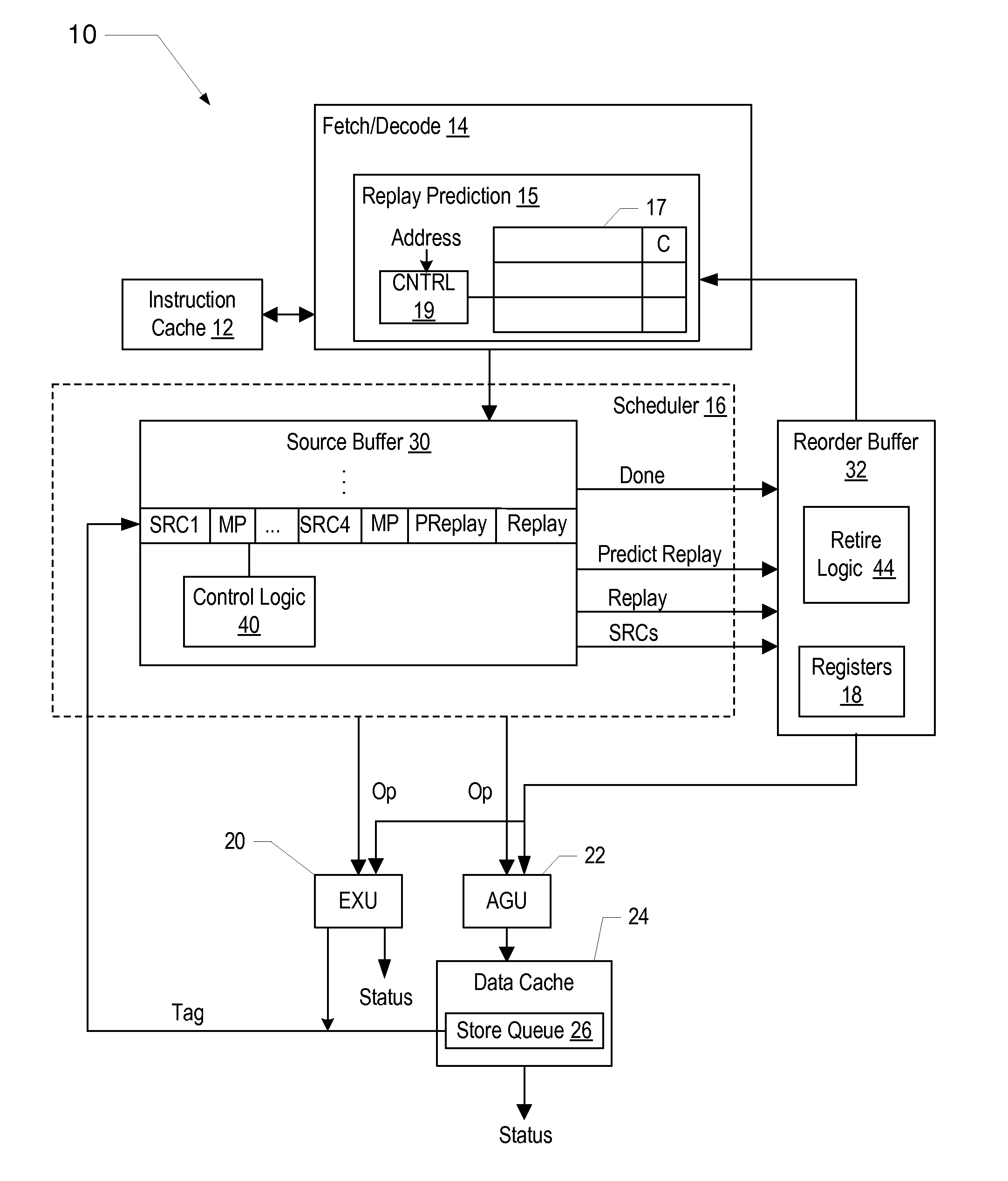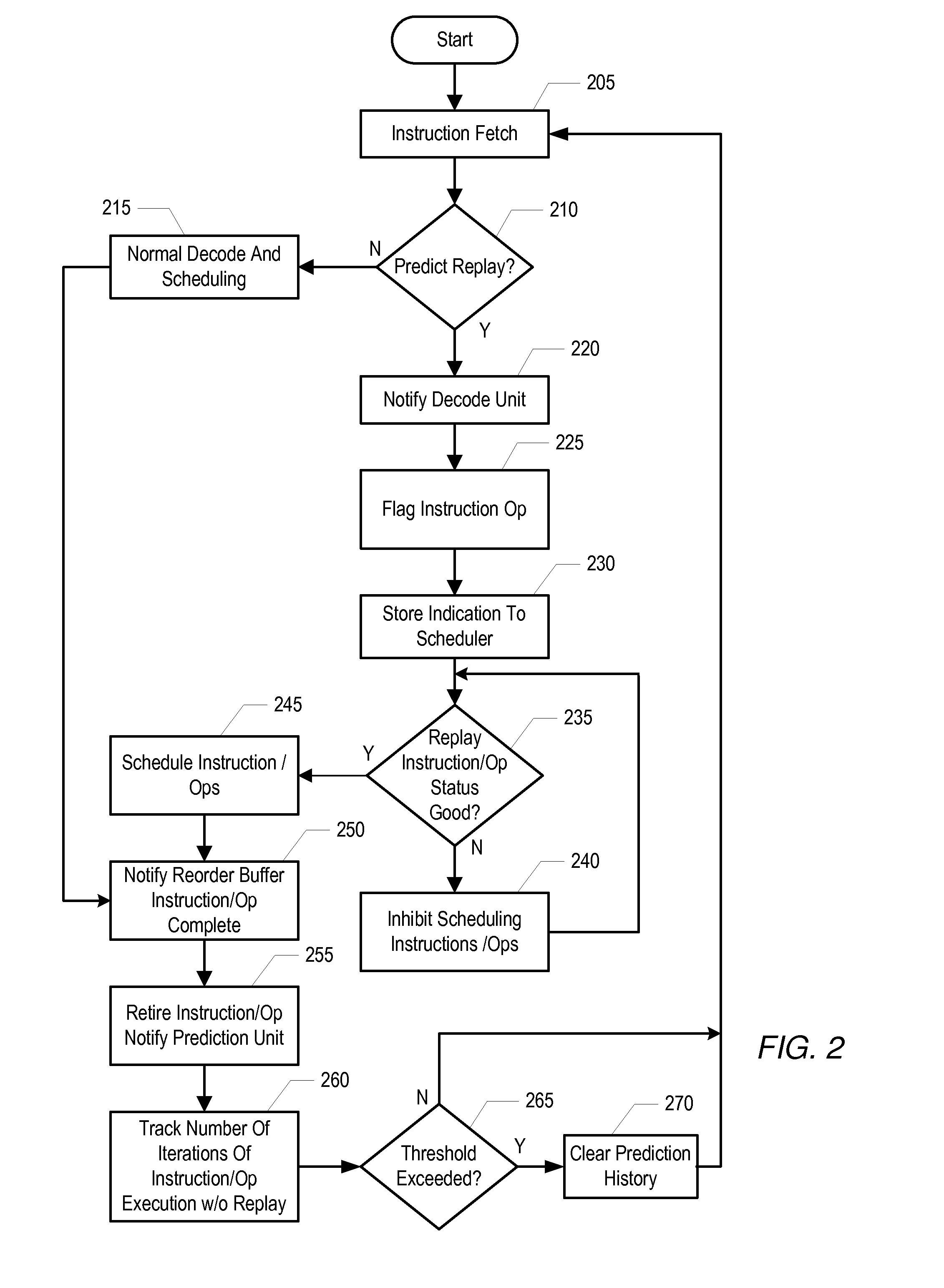Mechanism for suppressing instruction replay in a processor
a technology of instruction replay and processor, which is applied in the field of processors, can solve the problems of limiting the clock frequency at which the processor may operate, speculative instructions, and additional hardware complexity of the processor
- Summary
- Abstract
- Description
- Claims
- Application Information
AI Technical Summary
Benefits of technology
Problems solved by technology
Method used
Image
Examples
Embodiment Construction
[0017]Turning now to FIG. 1, a block diagram of one embodiment of a portion of a processor 10 is shown. In the illustrated embodiment, the processor 10 includes an instruction cache 12, a fetch / decode unit 14, a scheduler 16, an execution unit (EXU) 20, an address generation unit (AGU) 22, a data cache 24, and a reorder buffer 32. The instruction cache 12 is coupled to the fetch / decode unit 14, which is coupled to the scheduler 16. The scheduler 16 is further coupled to the reorder buffer 32, the EXU 20, and the AGU 22. The AGU 22 is shown coupled to the data cache 24, which is in turn coupled back to the fetch / decode unit 14, and to the scheduler 16. It is noted that processor 10 may include other components that are well known and are thus not shown or described for simplicity.
[0018]The general flow of instructions / instruction operations in the processor 10 will next be described, to provide context for the additional details described below. The fetch / decode unit 14 may fetch ins...
PUM
 Login to View More
Login to View More Abstract
Description
Claims
Application Information
 Login to View More
Login to View More - R&D
- Intellectual Property
- Life Sciences
- Materials
- Tech Scout
- Unparalleled Data Quality
- Higher Quality Content
- 60% Fewer Hallucinations
Browse by: Latest US Patents, China's latest patents, Technical Efficacy Thesaurus, Application Domain, Technology Topic, Popular Technical Reports.
© 2025 PatSnap. All rights reserved.Legal|Privacy policy|Modern Slavery Act Transparency Statement|Sitemap|About US| Contact US: help@patsnap.com



